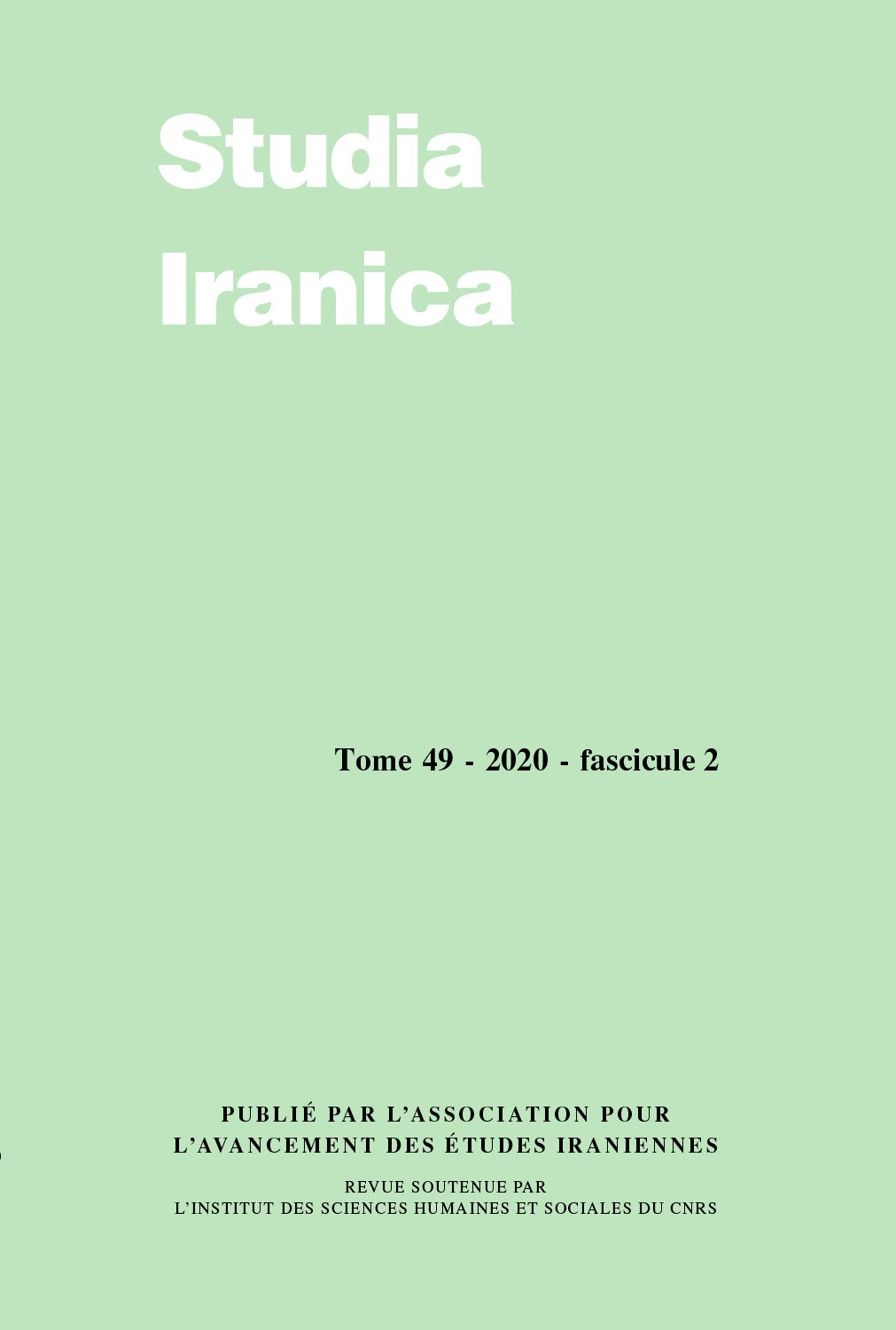 previous article in this issue previous article in this issue | next article in this issue  |

Preview first page |
Document Details : Title: Institutional Metamorphosis or Clerical status quo? Subtitle: New Insights into the Career and Work of Sayyid Mīr Muḥammad Bāqir Khātūnābādī Author(s): MOAZZEN, Maryam Journal: Studia Iranica Volume: 45 Issue: 1 Date: 2016 Pages: 65-88 DOI: 10.2143/SI.45.1.3170064 Abstract : Sayyid Mīr Muḥammad Bāqir Khātūnābādī (d. 1715) was the first Safavid mullā-bāshī. He achieved unrivalled prominence in the court of Shāh Sulṭān Ḥusayn, the last effective Safavid ruler. A number of scholars have documented his influence on the shah, but little has been written on Khātūnābādī himself. Khātūnābādī had several overlapping careers: he was Shāh Sulṭān ˌusayn’s advisor in religious matters and the head of religious scholars, as well as the rector and teacher of the Madrasa-yi Sulṭānī. In addition to these responsibilities, he authored a number of treatises and translated works from Arabic into Persian, including a glossed translation of the Gospels. This paper explores Khātūnābādī’s educational and intellectual formation as far as the sources permit, linking him to the institutions and ideas that he represented. It also analyzes the socio-political role he played in the troubled milieu of early eighteenth-century Iran. This more comprehensive examination of the life and career of Khātūnābādī affords us a new perspective on the conditions of the religious and scholarly community in early modern Iran. Sayyid Mīr Muḥammad Bāqir Khātūnābādī (m. 1715) a été le premier mullā-bāshī safavide. Il a atteint la plus haute position à la cour de Shāh Sulṭān Ḥusayn, le dernier souverain safavide effectif. Certains chercheurs ont documenté son influence sur le shah, mais on a peu écrit sur ce dignitaire lui-même. Khātūnābādī a mené trois carrières simultanées: il était conseiller de Shāh Sulṭān Ḥusayn pour les affaires religieuses, chef des érudits religieux, et recteur et enseignant à la Madrasa-yi Sulṭānī. Il a écrit un certain nombre de traités et traduit des œuvres de l’arabe en persan, y compris une traduction annotée de l’Évangile. Cet article examine la formation pédagogique et intellectuelle de Khātūnābādī, à la lumière des sources disponibles, et trace les liens qui l’unissent aux institutions et aux idées qu’il a représentées. L’article propose également une analyse du rôle socio-politique qu’il a joué dans le contexte agité du début du XVIIIe siècle en Iran. Cet examen plus approfondi de la vie et de la carrière de Khātūnābādī nous offre une nouvelle perspective sur les conditions de la communauté religieuse et savante du début de l’Iran moderne. |
|


